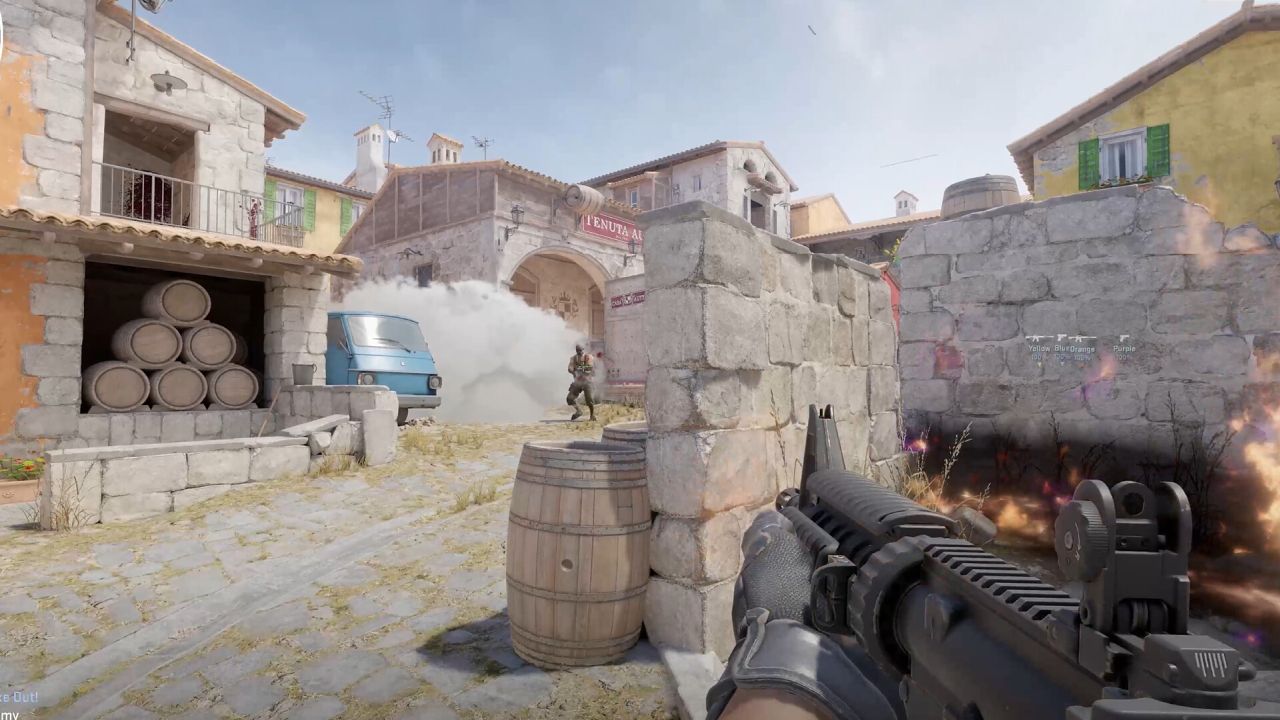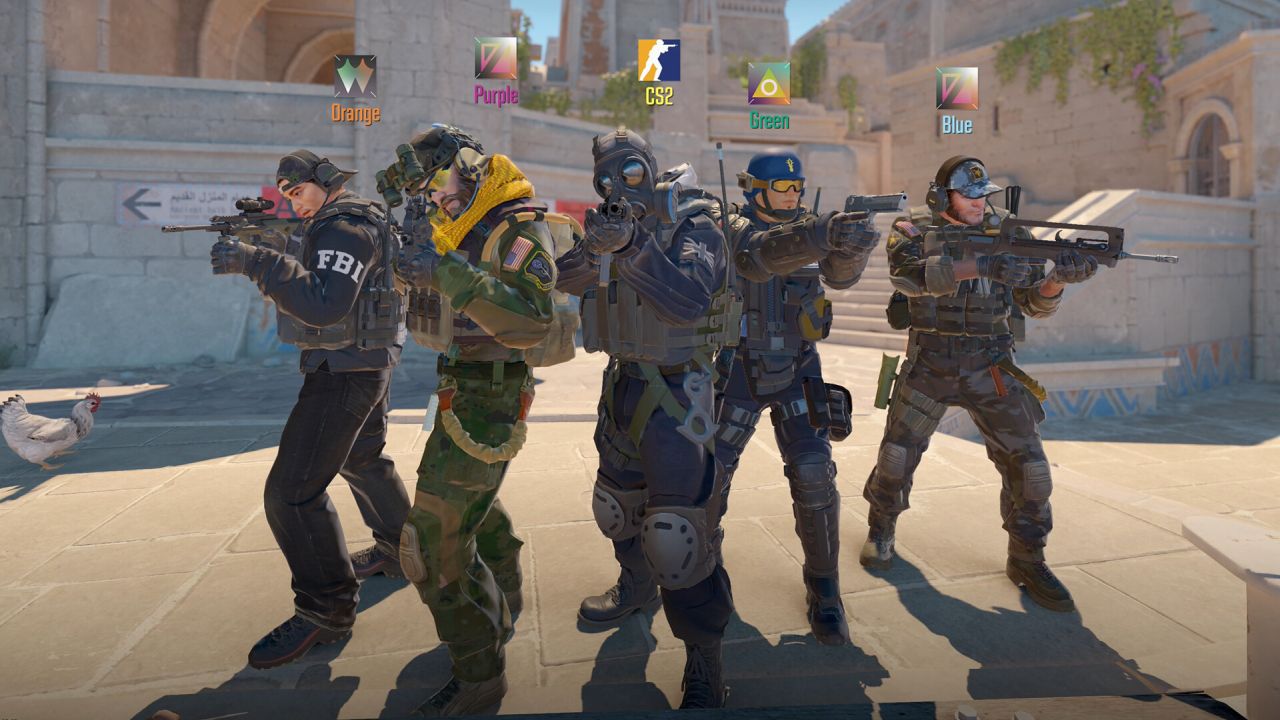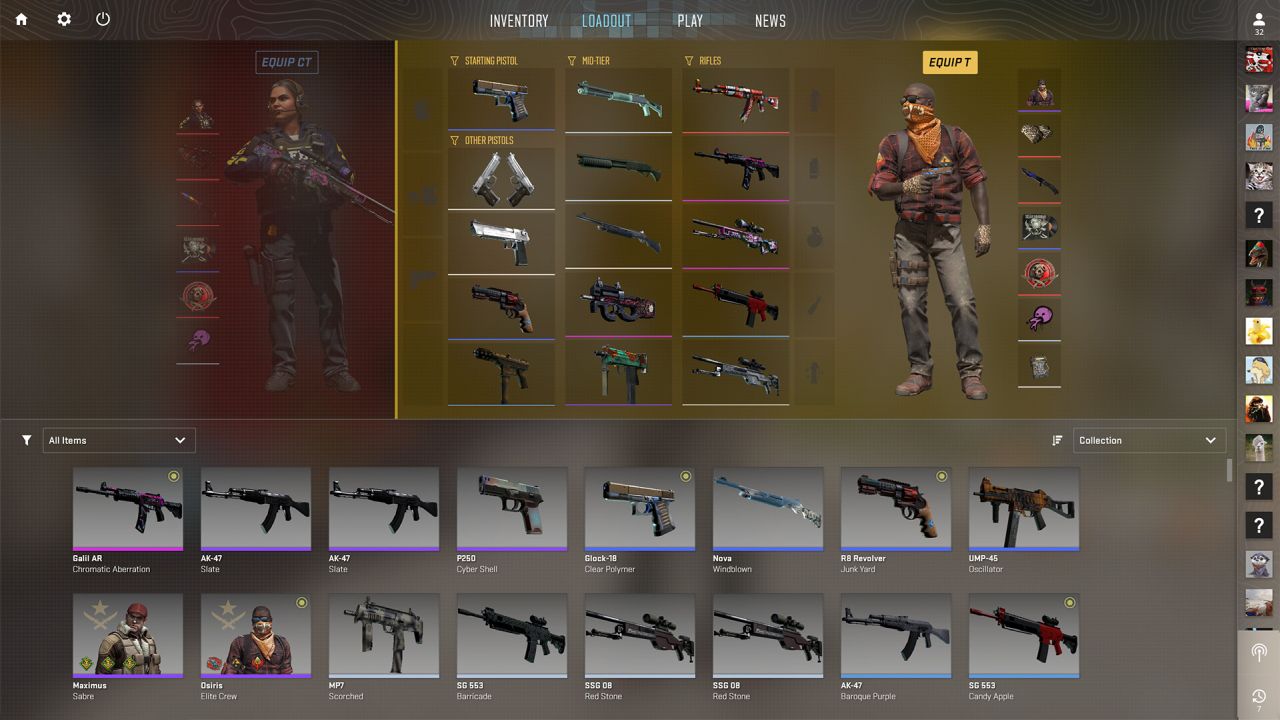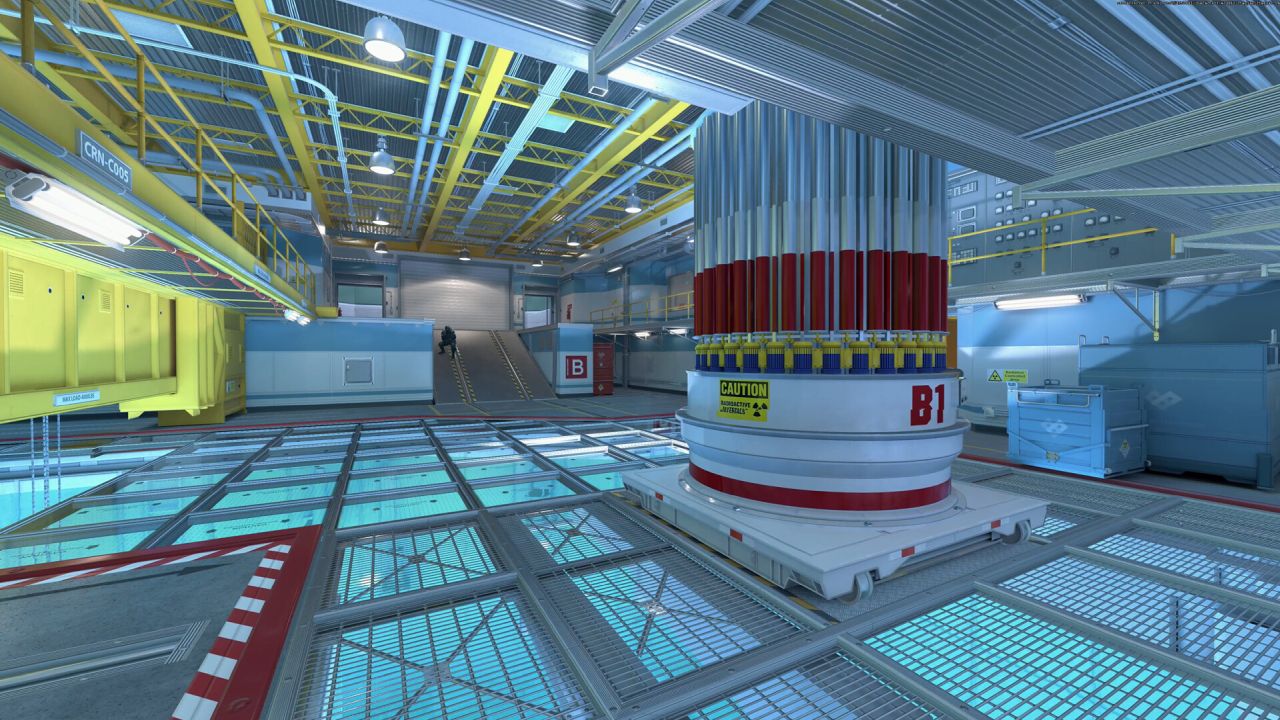Counter-Strike 2 - Hands-on Impressions
Everything old is new again
Counter-Strike, the final frontier. It's a series that has stood the test of time, and remains one of the few originals that are still around to this day - not to mention, more popular than ever, all without compromising the core gameplay that made it great in the first place. Even as others tried to reclaim their relevance and faded anyway (Unreal Tournament), or diluted its player pools with yearly and spinoff entries (Call of Duty, Warzone), Counter-Strike remained steadfast. It also withstood many challengers, from the battle royale distractions of PUBG and Fortnite, to the imitators like Valorant. In the face of greater competition from high quality free-to-play games such as Apex Legends, CS did cave, and switched to a free-to-play model a few years ago. But even over the decades that have passed, as some aspects of the experience changed and evolved, the core foundation remained the same. With the recently released Counter-Strike 2, Valve continues to show that it understands what makes this franchise so timeless, even if the launch has not been perfectly smooth.

If you've somehow missed out on the legacy of this decade-old series, the competitive foundation has remained the same – two teams of five players face off with tactical shootouts on small, intricately designed maps in round-based matches. The CT team must prevent the T team from planting the bomb at one of two designated sites on the map, by either eliminating their opponents and preventing the plant entirely, or by defusing the bomb if it has been planted. The rounds have a short time limit, and CTs also win if they survive and no bomb is planted in time. At half-time of 15 rounds played, the teams switch around, and the first team to win 16 rounds win the match.
While some of the minute details have changed over time, these basics have remained the same and at this point are as iconic as the name itself. The original Counter-Strike started off as a mod for Half Life, and was eventually picked up by Valve to be a proper standalone game. Its popularity grew and peaked with CS1.6, the final version to be released on that engine. A single player spinoff was attempted with CS: Condition Zero, but it was not well received. So Valve quickly returned to the multiplayer scene with CS: Source in 2004. The new game ran on a more modern engine, but made changes to the feel of the gameplay that not everyone in the CS community appreciated. The player population became a bit split during these early years, as CS1.6 veterans did not all choose to move on. Nearly a decade later, Valve decided to try again, with CS: Global Offensive.
CS: GO is the game that put the series back into the spotlight. Although like Source, it did not have a very good start, with plenty of technical issues and players not enjoying the yet another change to the feel of the gunplay, the title eventually surged. It also introduced many changes to the core formula such as Molotovs that changed the way teams fought over map control, new weapons, and more. Thanks to a variety of major updates and new features that continued to be added over the years, and the explosion of the competitive eSports scene, the title grew, eventually becoming the most popular game on Steam. But after such a long time, it was time to let go and start fresh, as the game's engine went through so many changes and was getting too old for Valve to keep updating.
Counter-Strike 2 is not the second game in the series to be released, but rather the name comes from the fact that it now runs on Valve's Source 2 engine. And as far as franchise progress goes, it feels more like the transition from 1.6 to Source; there are just a couple of new mechanics, but otherwise the gameplay remains unchanged. That's because CS2 is essentially a recreation of CS: GO on the new engine; a remaster rather than a new entry. If you've played GO in the past few years, you will find CS2 to be quite familiar.

That's not to say the experience is identical. As you might expect, a new engine means new feel to the weapons and spray patterns. And as is apparently tradition, at launch there is plenty of dissatisfaction in the community in how CS2 handles. It's still a hardcore tactical shooter, where positioning and reflexes are key, but there are some inconsistencies with the shooting, the hitboxes, and other growing pains that we and others have experienced. The engine now uses a sub-tick concept that promises to no longer need to worry if you're playing at 64 or 128 tick servers, but this too introduces a new feel to the movement and gunplay. It will undoubtedly take time to adjust, but there is also some work for the developers to do to eradicate some of the notable issues. One new feature that hopes to help players adapt are the dynamic crosshairs. Instead of being fixed on the screen, they shift from the center and to try and follow the spray pattern of the bullets, so players can adjust their aim. It's a highly interesting concept that may help some players improve their weapon control, either as a temporary setting or one that they use for CS2 in the long run.
CS2 also makes a key change in how smoke grenades work. In the past, they were simply static smoke clouds, and we had things like one-way smokes that allowed players to peak through without being seen. But in the new game, they are responsive, meaning players can tear through them with bullets (to limited effect), and also briefly clear them out by using an HE grenade. This creates a new dynamic to the engagements, as you decide to spend an HE grenade to see what could be lurking in or behind the smoke. It's an interesting concept that's well-executed and provides new tactical options to consider. Elsewhere, if the Ts are successful in planting the bomb and it detonates, the lethal radius has been notably increased for most maps, meaning it can catch players who are too close and affect the team's economy for the next round.
The new engine also means a change to how the game looks. Although during CS: GO's extended lifetime, a number of maps already underwent renovations, CS2 remakes them once again. The title changes the look and feel of all the included maps such as Nuke, Inferno, Dust 2, and Office, to make them look more modern. There are total reworks of textures, visuals, and effects - but of course not the iconic layouts. There is an increase to general brightness of the game, tweaks to contrast, using more vivid colors, and changes to shadows. Target tracking seems good, and seeing your own and enemy shadows also adds another strategy element. Not all the maps from GO are here, but will likely be added later on. Some changes are a bit more controversial, such as bullets now leaving visible tracers in the air; they don't always match up with where your bullets land, and some players find the effect distracting.
Counter-Strike has always been a competitive game first, and so CS2 renews its focus on that area. Players can enter the new matchmaking system as solo or as groups, and play against others as they earn points in the new skill rating system. Players start off at rank 0, and can win their way up. Unlike CS: GO which used a more simplistic tier-based system, CS2 lets you see your personal rating and that of others, with exact numbers being displayed, and prompting you to keep grinding to increase it. Losing and winning games affects the rating, as does your personal performance. The skill ranks are also per-map based, so you will have to work on those individually. How well the new ranking and matchmaking works will be something to wait and see over time, as during the first few weeks of launch the ratings are still undoubtedly being balanced, as we've had some matches that seemed quite uneven.

CS2 also introduces more eSport-type options to its competitive matchmaking, with the map veto votes before each encounter – a feature that was usually used by the hardcore community with third-party tools. Another huge change for competitive is the match length. After decades of the 30-round standard, the developers have decided they wanted quicker matches, and competitive games are now shortened to 24 rounds. This means the first team to 13 wins, instead of to 16. This also impacts the economy of the match, as the initial pistol rounds become even more crucial, and teams have less opportunity for "save" rounds where they simply do not buy any weapons and just let the opponents win. It's a big adjustment and it'll be interesting to see how it affects the flow of matches which hasn't changed in decades.
If you're new to the series or want a less intense start, you can still practice offline with the bots. You can also dip your toes into competitive with the casual mode, which expands the map pool and has more players per side. Wingman, a 2v2 gamemode, also returns for some strategic completion on small map sections. The included Italy and Office maps also offer the hostage rescue mode, for a change of pace. Or, you can jump into Deathmatch, with its Free for All chaos. However, casual players will find CS2's options quite lackluster at launch, compared to CS: GO. The included Deathmatch mode is FFA only, with no team-based option, which makes it difficult to get into the groove as it's far too chaotic. The War Games casual modes are missing too, with no Arms Race, Demolition, Flying Scoutsman, or Retakes. Nor is there the battle royale mode Danger Zone. Community servers are also lacking, only running official maps for now as the Steam Workshop support is still being worked on, so fans of Surf will have to wait. Of course, many of these were added over the course of CS: GO's lifetime, but it's still disappointing to see them missing here – especially given that CS2 is a replacement of CS: GO, and not a standalone sequel.
In an undoubtedly controversial move, like the recent approach by Blizzard with Overwatch 2, Global Offensive is essentially no longer available to play without some special tweaks, and will apparently be removed entirely next year. The reasons for this from Valve's perspective are obvious – they don't want to split the player community again, they don't want to support the old game anymore, and they don't want to keep updating features and maintaining content parity between them. While CS2 will likely gain a lot of these modes back with time, it's discouraging for casual players to now have very few options to play. As such, CS2 is not really recommended for casual players at launch, unlike Global Offensive which actually leaned into the casual market more heavily compared to Source.
Another likely major reason to shutdown CS: GO are the weapon skins, one of the most critical ways for the game to make money and support a huge player market economy. All of the player inventories were transitioned into CS2, and Valve likely no longer wanted to keep adding new skins to two different games, with its potential compatibility issues and differing visual styles. It's a side of Counter-Strike that is huge in some player communities, but thankfully remains fully separated from the gameplay.

The transition to a new engine also means some performance issues. We've had our share of issues with getting the game running, though to Valve's credit they have been patching things on a consistent basis. Framerate stability and eliminating random stutter are critically important to a competitive tactical shooter, and as players scour the internet for solutions to their problems, and AMD tries to sabotage you with poor drivers, it will take some time to smooth things out.
Counter-Strike 2 feels very much like the beginning of a new era. The switch to a new engine and a new game means that there will be a lot of early stumbling blocks, from missing modes to inconsistent gunplay. But the gameplay mechanics are starting from the extremely well rounded CS: GO foundation, which means things can only improve from here. It's still unfortunate that Valve chose not to at least sunset CS: GO more gracefully, leaving casual players without much to do for now. Still, as a free to play title, it's the most well-known competitive team objective based shooter on PC, and no other game seems close to taking that crown away.
 Comments
Comments




















